Decision on reviled sea birds has foes feeling helpless
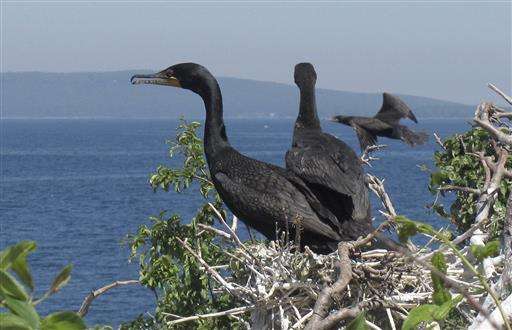
Biologists worry a decision by a federal judge to block programs that control double-crested cormorants in 24 states could set back their efforts on the birds, blamed for despoiling islands in Lake Champlain where they nest.
In other areas of the country, cormorants—sea birds with long necks and hooked bills—are blamed for eating thousands of sport fish favored by anglers and preying on fish in farms.
Vermont officials, who this time of year are usually overseeing control programs that include oiling eggs to prevent them from hatching, and shooting the birds or scaring them away, worry that even one year without the control program could see the number of cormorants on the lake increase by 21 percent.
"It will not take very long for that number to double without some active management," said Mark Scott, wildlife director for the Vermont Department of Fish and Wildlife, which manages about 20 islands and some sections of shoreline that have been known to host cormorants.
The March decision by a judge in Washington determined that the U.S. Fish and Wildlife Service didn't do its homework before issuing a pair of orders that let people kill thousands of cormorants each year to preserve vegetation in some areas and protect sport fish in 24 states and farmed fish in 13 of those states.
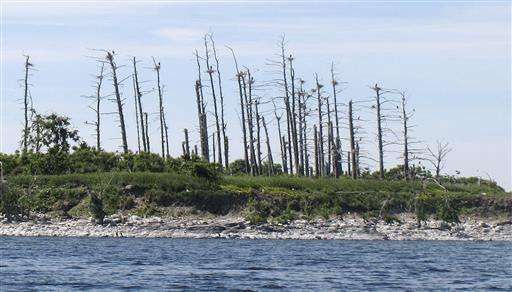
U.S. Fish and Wildlife spokeswoman Laury Parramore said the agency is studying its next step.
Cormorants, which winter in the South and spend summers on the Great Lakes and Lake Champlain, have nested on Champlain for at least a century. They were brought to near-extinction by the pesticide DDT, and no one is sure why the numbers have increased dramatically over the last quarter-century.
Dave Capan, a retired University of Vermont biologist who is managing a cormorant program on the Four Brothers Islands, estimates there are about 1,600 breeding pairs of cormorants on the lake, down from a peak of about 4,000 about 15 years ago. The islands lie in the middle of the narrow, 120-mile long lake, are owned by the Nature Conservancy and are off limits to the public.
"They nest in very large numbers, and they kill trees on islands in the lake," Capan said. "There are at least five or six islands in this lake that have lost most of their trees and vegetation."
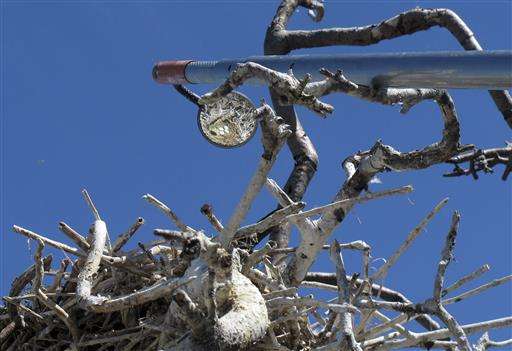
Capan disagrees with Scott's assertion that the birds would increase by 21 percent in one year without control. He said he feels that as long as the control programs resume by next spring, there shouldn't be any long-term setback to the control efforts.
Mike Freeze, the president of the National Aquaculture Association, who runs a fish farm in Keo, Arkansas, said cormorants eat more of the farm's fish than any other birds. In the winter, he has two or three employees who work full-time protecting the company's 1,000 acres of ponds from birds, especially cormorants.
Cormorants aren't a problem in Arkansas in June, but Freeze and others in the industry are watching the legal case.
"We've got to have some kind of relief by October," Freeze said. "That's when these hordes descend on us," Freeze said.
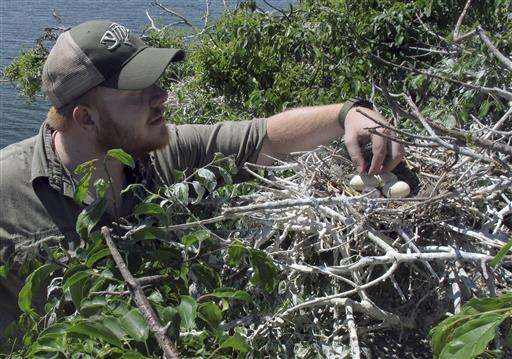
Cormorants have a long history of being hated by humans, said Ken Stromberg, a retired U.S. Fish and Wildlife Service biologist from Denmark, Wisconsin, who was among those who filed the lawsuit against the service that led to the March decision blocking the control programs.
"A cormorant is a scapegoat for everything that consumers are unhappy about," said Stromberg, who isn't opposed to cormorant control programs but feels the Fish and Wildlife Service must do the required studies before issuing orders.
Matt Trombley, a Vermont-based fishing charter captain who fishes on lakes Champlain and Ontario, said he's no biologist but is worried about the end, for now, of the cormorant control program.
"If we don't keep up each year, they are going to overpopulate," he said. "Then it's a huge step to try to get them back under control again."
-
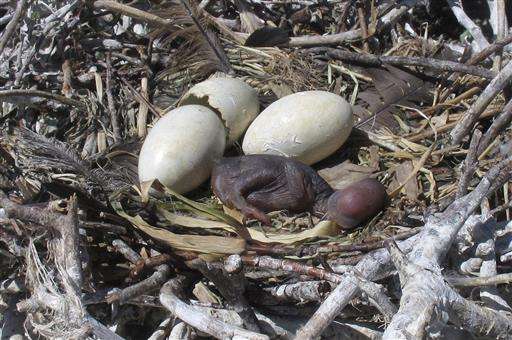
In this June 16, 2016 photo, a just-hatched, double-crested cormorant lies in a nest beside eggs on island "B" of the Four Brothers Islands on the New York side in Lake Champlain. Biologists have been working to reduce the populations of the birds in the nesting grounds on the islands in the lake. But a federal judge's decision suspended efforts to control the bird on Lake Champlain and in 24 eastern states. (AP Photo/Wilson Ring) -
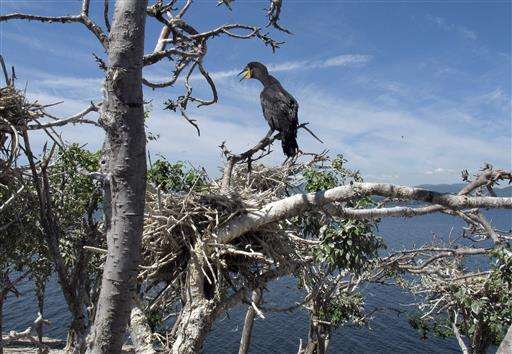
In this June 16, 2016 photo, an immature double-crested cormorant sits atop a tree on island "B" of the Four Brothers Islands on the New York side in Lake Champlain. Biologists have been working to reduce the populations of the birds in the nesting grounds on the islands in the lake. But a federal judge's decision suspended efforts to control the bird on Lake Champlain and in 24 eastern states. (AP Photo/Wilson Ring)
© 2016 The Associated Press. All rights reserved.

















